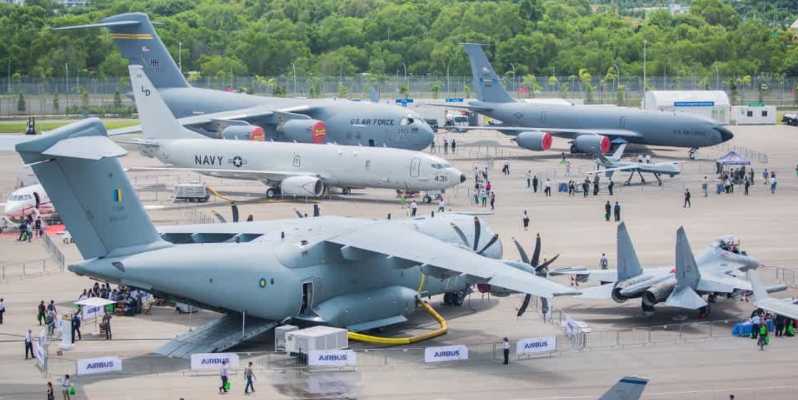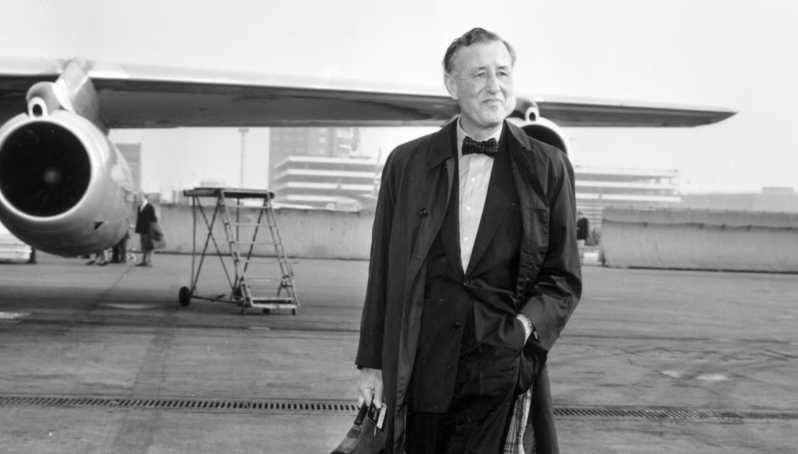On February 20, the 9th Singapore International Airshow officially opened at the Changi Exhibition Center in Singapore. As the first important international air show in 2024 to "start anew", "new" not only represents the beginning of the new year, but also represents the host city of Singapore. It also means that the global aviation industry will take off again after the epidemic, and the aviation industry will actively integrate into the global aviation industry chain, share opportunities, and create a better future.
This exhibition has thousands of exhibitors from more than 50 countries and regions, including Boeing, Saab, Airbus, Dassault Thales, Lockheed Martin, Russian Airlines, Rolls-Royce, MBDA, CFM, Bell, P&W, CAE, KAWASAKI, Mitsubishi, Leonardo,
Lufthansa, ST Engineering, AVIC/AVIC and other giants gathered. With the theme of "Working together to create value", the Chinese exhibition group appeared at the Singapore Air Show again after two years. China Aviation Industry Corporation of China and other important aviation manufacturing enterprises in my country set up special booths and exhibited their "leading products". The exhibited products are led by the "20 family", covering seven categories including fighter jets, trainers, helicopters, drones, transport aircraft, special aircraft, and aviation emergency rescue equipment, fully displaying products with high technical level and broad market prospects. The C919 passenger aircraft of China Commercial Aircraft Corporation also performed a flight show, rendering the oriental splendor for the sky of Singapore.
On-site experience
At the 2024 Singapore Air Show, the editor-in-chief of this magazine personally went to the exhibition and experienced this aviation feast from the Lion City on the spot. The overall impression has two aspects, one is short, small and exquisite, and the other is a strong sense of experience. Short refers to the short flight time. It is slightly longer on professional days, and only one hour on public days (11:30-12:00 in the morning and 2:30-3:00 in the afternoon). For Chinese military enthusiasts who are used to watching the four- or five-hour flight shows at the Zhuhai Air Show, this flight show time is too short. Moreover, the airport runway cannot be seen at the Singapore Air Show, which means that the aircraft performing the flight show and their take-off and landing slides cannot be seen by the audience. The flight show area is not over the land, but over the sea, which is a unique point.
Small refers to the small venue. Not only is the venue for watching the flight show small, but the indoor and outdoor display areas are also relatively small. The flight show viewing area is only as big as a football field, and it is a flat ground. If the person in front holds an umbrella, it is easy to block the view of the people behind. In addition, some small trees on the side of the field will also block the aircraft performing the flight show. There is only one exhibition hall in the indoor exhibition area, which is about the same size as the weapons hall of the Zhuhai Air Show. The outdoor exhibition area is not large either, and you can walk to the end in a few minutes.
Exquisite means that all the aircraft on display are hard goods. As far as military aircraft are concerned, from the US F-35A fighter, P-8A anti-submarine patrol aircraft, C-17 large transport aircraft, KC135 tanker, to the host Singapore’s F-15SG, F-16D, F-16D+ fighter, A330MRTT tanker, "Apache" armed helicopter, "Chinook" transport helicopter, to Malaysia’s Su-30MKM fighter, Germany’s A400M transport aircraft, and China’s Z-10ME armed helicopter, etc., so many exhibits are densely distributed in a small outdoor display area, almost one aircraft next to another. The audience can see them all without walking too much.
Of course, the most important feeling is the strong experience.
Even on public days, there are reception staff in front of almost every aircraft. Some can board the aircraft for experience, and some can communicate with the reception staff. The interactive effect is very good.
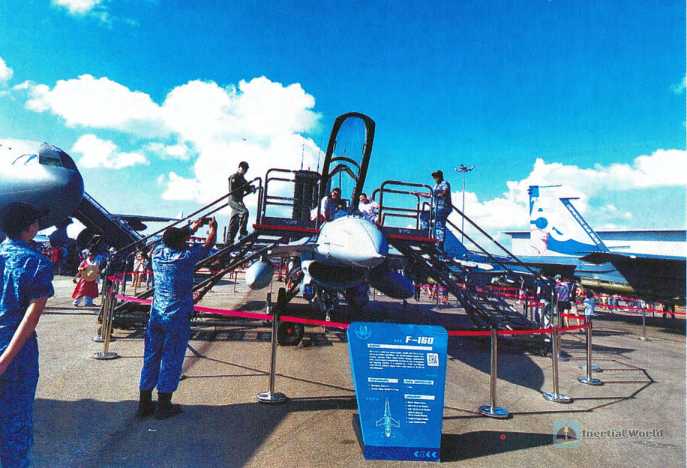
For the audience, the most exciting thing is to be able to board the plane.
The aircraft open to the public on site include Singapore’s F-15SG, F-16D, F-16D+ fighters, A330MRTT tankers, "Apache" armed helicopters, "Chinook" transport helicopters, etc. There are many people in front of each model. Some need to wait for one or two hours, and some need to wait for three or four hours or even longer. Fighter jets and armed helicopters can enter the cockpit for experience, and transport helicopters can directly enter the cabin for a visit. The A330MRTT tanker has air conditioning on, and the audience can sit and rest inside; and in front of Malaysia’s Su-30MKM fighter, you can also wear a simple flight suit and experience the thrill of being a fighter pilot.

The "20" family made their debut
On this international stage that brings together the world’s cutting-edge technology and the latest aviation products, the China Aviation Industry Corporation has a large lineup of exhibitors. In the indoor exhibition area, various military aircraft models are arranged in a staggered manner. The main combat aircraft models led by the J-20 stealth fighter are collectively unveiled, including the J-20 and J-31 stealth fighters with stealth combat capabilities; the Attack-11 that can carry out stealth strike missions; the Y-20B and Y-9E that can implement strategic delivery and comprehensive support capabilities, and the KJ-500 early warning and command aircraft that can realize air early warning and command in an informationized and complex battlefield environment.

In addition, the various drone models hanging in the air of the exhibition hall also attracted the attention of many visitors, including Wing Loong-2H, WL-10A, WL-X and other drones. These products have won the favor of many potential customers with their highly competitive price-performance ratio. In addition, the models of military helicopters such as the Z-10ME, Z-9DE, and Z-20, as well as the Z-10ME real machine displayed in full state in the outdoor exhibition area, are all
showing the world the strong strength and broad prospects of China’s aviation industry. For the "20" family, especially the J-20 fighter model, it is indeed a big surprise to appear at the Singapore Air Show. After all, this aircraft is the "trump card" in the hands of the Chinese Air Force and is not easily shown to the outside world. So when seeing the J-20 going abroad for exhibition, many people are speculating "Is the J-20 also going to Japan?
In fact, this is not the first time that the J-20 has been exhibited in China. At the Paris Air Show in June last year, the J-20 and the H-6K appeared together. CCTV Military even prepared a special program to interpret the intention behind it. Compared with the J-10CE, FC-31 and other fighters that are truly used for export, the J-20 on display did not have the "E" suffix for export. Given the special status of the J-20 in the Air Force, there is indeed a risk of leaks when it is exported. Therefore, it is generally believed that this is just a display of strength, and it does not mean that the J-20 has really obtained an export license. The only problem is that the H-6K that once appeared in Paris did not continue to participate in the exhibition, and the J-20 But it once again appeared at a foreign air show. Although judging from the J-20’s production capacity and the PLA’s demand for stealth fighters, the J-20 will not be able to be exported in the next few years, but the outside world’s "eager attention" to the J-20’s foreign trade does reflect to some extent the huge impact it may have after export.
Although there is an option of F-35A/B stealth fighter in the current international military trade market, it is not easy to buy it. Not only do you need money, but you also need to maintain a close alliance with the United States and cannot waver in the slightest. Otherwise, no matter how much money you have, you will not sell it. For example, Turkey was kicked out directly because it did not listen to the United States on the Kurdish issue, forcing Turkey to develop its own fifth-generation aircraft. In addition, Middle Eastern countries such as Saudi Arabia and the UAE The "tycoon" in the region was also disqualified from purchasing because it did not completely stand with the United States. Given that the US F-22 can no longer be exported to Russia and the Su-57 itself has not equipped a few, the J-20 is actually the only real heavy stealth fighter that can be exported in the next 10 years. As long as international buyers receive the J-20, it means that they have gained regional air superiority, which is very attractive.
If it is still unclear whether the J-20 will be exported, the Y-20 and Z-20 displayed together with the J-20 are very eager to get foreign trade orders, because AVIC and AVIC have displayed these two aircraft at foreign air shows many times. The Y-20 aircraft is a new generation of military large-scale multi-purpose transport aircraft independently developed by my country. It has the characteristics of long range, large load capacity, and high speed. It can carry out various materials and Long-distance strategic air delivery mission for personnel. The maximum take-off weight of the aircraft is as high as 200 tons, and the maximum load is more than 60 tons. It can carry our army’s active main battle tanks. The maximum speed is about 800 kilometers per hour, and the maximum range is more than 7,800 kilometers.
Z-20 is a twin-engine 10-ton tactical general-purpose helicopter developed by my country. The maximum take-off weight of the aircraft is 10 tons, and the payload is about 5 tons. It can transport 12 soldiers or 6 stretchers at a time. The external load can be about 4 tons. The carrying capacity is between the current Z-9 and Z-8. In addition to performing airdrop assaults, transporting supplies, battlefield search and rescue and other tasks, the Z-20 can also perform day and night ground strikes, close air support, fire assaults and other tasks after adding weapon pods. It is a general-purpose helicopter with advanced technology, reliable performance and huge application potential.
The collective appearance of the "20" family at the Singapore Air Show is a concentrated display of the achievements of my country’s aviation industry over the years, and a powerful proof that my country’s aviation science and technology strength has entered the forefront of the world. It is both a technology display and a strength declaration.
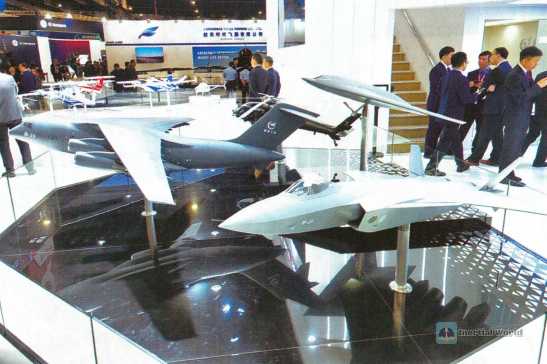
Attack-11 details display
At this air show, the only exhibit placed together with the "20" family is the Attack-11 stealth unmanned attack aircraft, which shows its status and importance.
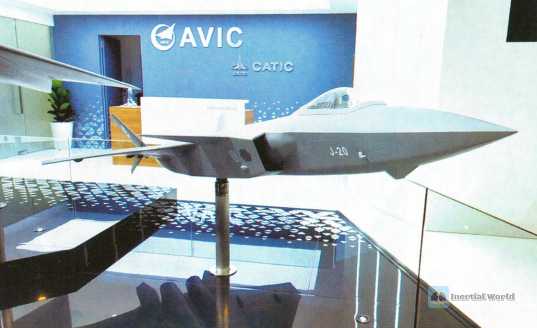
Attack-11 is a large stealth drone developed by China in recent years. The typical feature of this model is that it adopts a flying wing appearance layout design scheme, which looks a bit like a mini version of the B-2 bomber. This type of drone is 12.2 meters long, 14.4 meters wide, 2.7 meters high, with a maximum take-off weight of 10 tons and a combat radius of 1,500 kilometers. Like stealth fighters, the Attack-11 has a built-in bomb bay that can be loaded with multiple types of precision-guided munitions to perform air control assaults, air defense suppression and other combat missions.
As the world’s first large-scale flying wing unmanned attack aircraft put into use, the appearance of the Attack-11 at the Singapore Air Show is obviously of great significance. From the on-site exhibition, the model of the Attack-11 is very realistic, and the details shown are also very specific. Even the invisible nozzle behind the fuselage is clearly visible. Moreover, a Chinese reminder is added above the nozzle--"Danger! When the engine is working, it is forbidden to operate in the danger zone." It can be seen that this is not just an ordinary model for exhibition, but it is likely to be a small-scale real machine model for specific customers. The Singapore Air Show itself is an international air show event. The appearance of the Attack-11 here may lead it to the world stage. Singapore is also a country with great influence in ASEAN. At present, many Southeast Asian countries have bought Chinese equipment and are also interested in high-end equipment made in China.
Nowadays, with the changes of the times, the value and significance of drones have been fully explored, especially the drone wars in the Russian-Ukrainian conflict and the Palestinian-Israeli conflict, which have made the world aware of the importance of drones. In this field, China is at the forefront of the world. The export performance of the "Wing Loong" series and the "Rainbow" series of drones is quite outstanding, and the name of Chinese drones has been made in the international market. This time, China will display large stealth drones such as the Attack-11 at the Singapore Air Show, which is undoubtedly of great attraction to many Southeast Asian countries.
In addition, it is worth pointing out that the Attack-11 also plays an important role in the offensive and defensive system of our army. In addition to its own unmanned combat attributes, the Attack-11 has a greater value in cooperating with the J-20 and becoming the latter’s "loyal wingman." Judging from the video released by CCTV’s military channel, a J-20S two-seat fighter is equipped with three Attack-11 UAVs as "loyal aircraft". The pilot in the back seat of the J-20S is responsible for command and control, while the Attack-11 UAVs are responsible for forward reconnaissance and expanded vigilance, or serve as aerial information nodes and stealth launch platforms, etc., to further improve combat effectiveness while ensuring the safety of the command aircraft.
Therefore, the Attack-11 and J-20 were displayed together, and the outside world speculated that this move may indicate that China intends to promote this "double stealth" combination to foreign trade, bringing new trends to the international military trade market. Even if the J-20 will not be exported for the time being, the Attack-11 has become the object of favor for many countries with its advanced stealth technology, excellent flight performance, wide application prospects and important role in future wars.
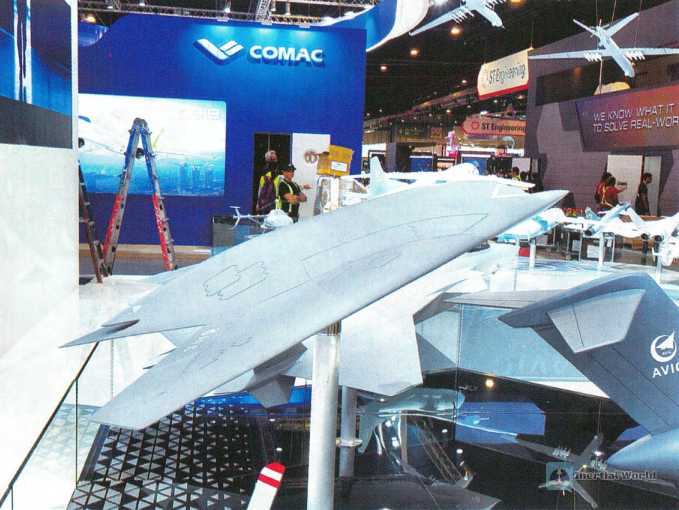
FC-31 appears again
For the FC-31, which is already a frequent visitor to the air show, everyone can think of it appearing again at this year’s Singapore Air Show. But the placement of the aircraft this time is very interesting. It was not placed together with the J-20, which is also a stealth fighter, as usual, but was placed in a row with J-10CEL-15 "Falcon", JF-17 "Fierce Dragon" FTC-2000G and other combat aircraft. This is very interesting, as the previous models have already been sold.
FC-31 is a fifth-generation single-seat, twin-engine stealth fighter developed by AVIC, and is known as the latest multi-purpose fighter that will dominate the future battlefield. The aircraft has high survivability and excellent electronic countermeasure performance, and is mainly positioned for export. Since its successful maiden flight on October 31, 2012, FC-31 has undergone many improvements and upgrades, and its 3.0 version has greatly improved its comprehensive performance in all aspects compared to the prototype ten years ago.
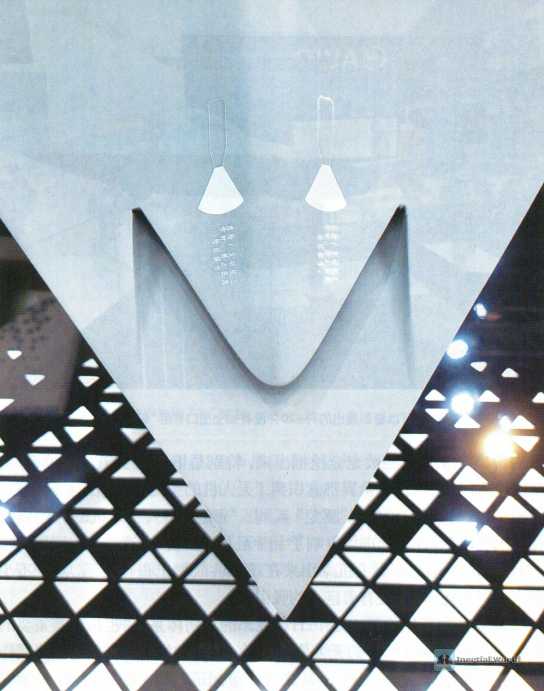
The 3.0 version of the FC-31 fighter has made significant breakthroughs in stealth performance, and is coated with the latest anti-radar stealth coating. Except for the engine tail nozzle cover equipment or diamond nozzle design that has not yet adopted infrared signal reduction, it almost encompasses all stealth technologies in the current fighter field.
In addition, it can also be equipped with the same electronic equipment as the J-20, including a helmet display system, which greatly improves the pilot’s perspective. This gives the FC-31 a strong advantage in target detection, external information integration capabilities, situational awareness and information sharing capabilities, beyond-visual-range multi-target attack and large off-axis omnidirectional attack combat air combat capabilities, and precision strike capabilities against ground and sea targets. At the same time, it also has the ability to adapt to complex weather conditions and wide-area use, as well as excellent comprehensive support capabilities.
Compared with the currently popular F-35, the FC-31 is a twin-engine fighter that focuses on air superiority, maneuverability and high speed. It is faster and more maneuverable than the F-35. However, the F-35 has a larger engine thrust, and its aerodynamic design tends to be multi-purpose combat, and its performance is more comprehensive than the FC-31. Overall, the performance of the FC-31 fighter is slightly inferior to that of the F-35, but the cost of the FC-31 fighter is lower and it is not uncompetitive.
However, FC-31 has not received any overseas orders so far. The fundamental reason is that most countries that need to be equipped with fifth-generation aircraft are bound by the US F-35 project. There is no second option. Refusing to purchase F-35 may be retaliated by the United States, and it is unlikely to choose FC-31. This leads to the awkward positioning of FC-31. Countries with demand will not buy it, and countries that can buy it have no demand. The only countries that may purchase it are Middle Eastern countries. They have strong defense needs and sufficient military budgets, and many countries have not been able to enter the US F-35 project. This is also the reason why the aviation industry vigorously promotes FC-31, but it is clear that the time has not come. Many Middle Eastern countries are still waiting and watching and will not easily place orders. To open up the international market, FC-31 still needs to wait patiently for the opportunity.

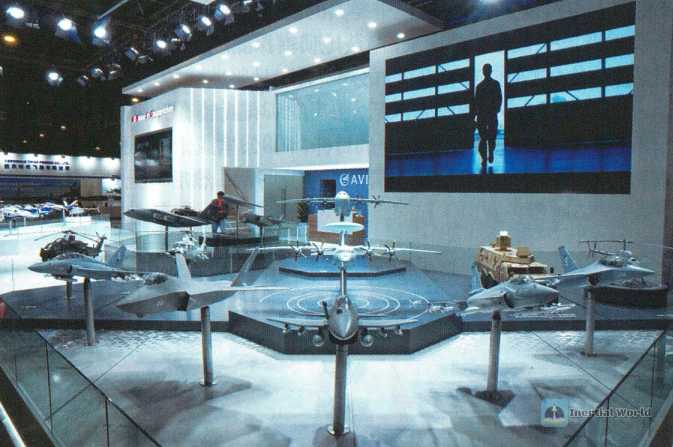
High-end version of Z-10ME
In addition to the "20" family, the most important exhibit of Aviation Industry and AVIC at this Singapore Air Show is the Z-10ME armed helicopter, which is exhibited overseas for the first time. This static Z-10ME is not only fully equipped, but also "fully equipped", and is displayed in a full combat state, which is a feast for the eyes and has become the most eye-catching exhibit in the outdoor static exhibition area.
The Z-10ME displayed this time, it is not difficult to find from the name that this armed helicopter is based on the Z-10 armed helicopter used by our army. The "M" after the number represents deep improvement, and the "E" represents export. The on-site publicity materials stated that the aircraft is a brand-new medium-sized multi-purpose attack helicopter with good flight performance and ultra-low altitude maneuverability, strong strike firepower, high battlefield survivability, good ergonomics, high reliability and maintainability, complete and advanced support resources, and can carry out various combat missions in all-weather, complex battlefield environments and field support conditions.
The deeply improved Z-10ME belongs to the high-end version of the Z-10 armed helicopter family. In addition to the large-capacity artillery compartment/external ammunition chain that has been displayed before, it is also equipped with cockpit/engine armor, new air intake filters, millimeter-wave radar masts, etc. More importantly, it is equipped with a complete new self-defense kit, including a new system of warning devices and active infrared suppression systems. There are also many small improvements in details, such as the height of the millimeter-wave radar mast has been lowered, and the additional armor no longer uses the previous fixing bolts, but has been changed to a quick-release structure to facilitate the rapid replacement of damaged parts in wartime. This series of upgrades and modifications have given the aircraft the characteristics of high configuration, full functions, and strong defense, and its comprehensive combat capability and battlefield survivability have been greatly improved.

In particular, the mast-mounted millimeter-wave radar installed on the top of the rotor of the aircraft uses an active phased array radar, which can monitor a larger battlefield and obtain stronger battlefield situation awareness capabilities. It can also provide target indications for multiple domestic millimeter-wave radar-guided anti-tank missiles at the same time, and strike multiple targets at the same time, effectively enhancing its combat efficiency and battlefield survivability. Because armed helicopters equipped with mast-mounted millimeter-wave radars have a classic tactic, which is to hide the fuselage behind the ridge, only extend the millimeter-wave radar, covertly scout and detect the battlefield situation, and then assign targets for other armed helicopters hovering in the rear and waiting to attack.

When the final strike plan is determined, all armed helicopters behind the mountain suddenly pull up and jump out of the ridge at the same time, each locking on the pre-assigned target, firing millimeter-wave image-guided fire-and-forget anti-tank missiles at the enemy 8 kilometers or more than ten kilometers away, and then immediately turn around and leave. This kind of covert assault tactics, the enemy armored forces’ field accompanying air defense system has no time to react, and there is no chance to counterattack, and it can also fight in the A-shooting B-guided combat mode, further improving its battlefield safety.
In addition to its many upgrades, the weapons used by this Z-10ME are also eye-catching. The rocket launchers mounted on the inner racks on both sides of the aircraft are different from the traditional cylindrical launch nests. Their cross-section is an inverted trapezoid, equipped with 7 "Fire Snake 70A" precision-guided air rockets; the right side of the fuselage is equipped with 4 CM-502KG missiles, which are called the Chinese version of "Brimstone"; the left side is equipped with 4 TY-90 air-to-air missiles. This white and slender missile is specially developed for helicopter air combat. Combined with the pilot’s helmet sight, it can accurately strike the enemy aircraft’s engine, rotor and cockpit and other key vulnerable parts, and can also effectively strike aerial targets such as drones.
The reason why the Z-10ME can be displayed in such a high-configuration form is, on the one hand, because the competition for medium-sized armed helicopters in the international military trade market is very fierce. In order to improve its competitiveness, the Z-10ME needs to be upgraded and improved in configuration, appropriately widening the gap with its competitors and meeting the needs of the international market with better configuration; on the other hand, in the Russian-Ukrainian conflict, the battlefield losses of armed helicopters were somewhat large, which led to users having higher requirements for the defensive capabilities of armed helicopters. Many configurations of the Z-10ME are upgraded in this regard; another possible reason is that there are rumors on the Internet that we have developed more advanced heavy-duty armed helicopters, so medium-sized armed helicopters such as the Z-10ME can be fully displayed to the outside world.
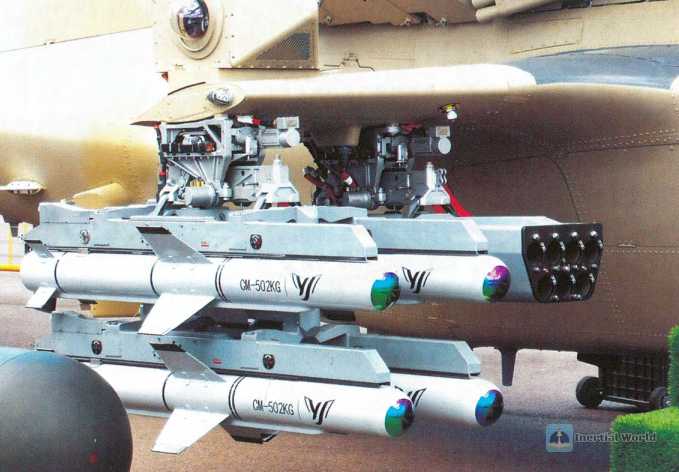
UAV products
At this Singapore Air Show, in addition to the Attack-11 stealth drone, the "Wing Loong" series reconnaissance and strike drone, and the "Spingo" series unmanned helicopter brought by the "national team" of aviation manufacturing, the drone products brought by some domestic private technology companies are also eye-catching.
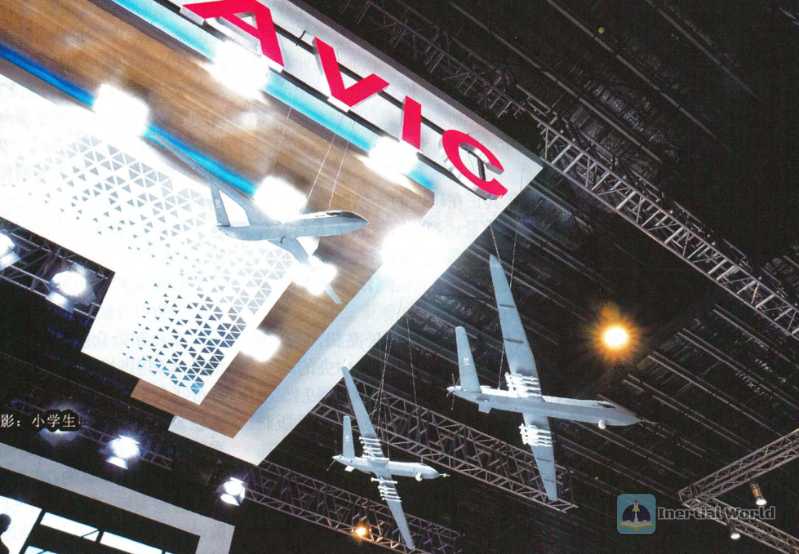
United Aircraft brought five industry-leading industrial-grade drones, including the TD550 coaxial unmanned helicopter with a long load, the Q20 intelligent flight platform "Ray Shadow", the Q3 pipeline inspection drone, the Q4 warehouse inspection drone, and the Q5 tunnel inspection drone. Among them, the TD550 unmanned helicopter and the Q20 "Ray Shadow" quad-rotor platform are both overseas debuts. The maximum load of the TD550 unmanned helicopter reaches 200 kilograms and the maximum ceiling is 6,500 meters. With its excellent endurance, load capacity and maximum ceiling, the TD550 has been widely used in logistics, transportation, emergency rescue and other fields. In the flood prevention and rescue operations in Beijing, Tianjin and Hebei last summer, the TD550 successfully completed tasks such as material delivery and assisting in personnel rescue.
The Q20 "Ray Shadow" quad-rotor platform has an ultra-long endurance of 75 minutes and a long range of 70 kilometers, which enables it to perform multiple tasks in one flight. It has been widely used in power inspection, public safety management and other fields. This Spring Festival, Q20 delivered New Year’s Eve dinner in Anhui, Heilongjiang and other places, integrating ice and snow culture and tourism to bring new experiences to consumers. The three drones, Q3, Q4 and Q5, have the ability to operate in confined spaces such as underground and indoors, and have set off a "technological revolution" in scenes such as sewer inspection, warehouse inventory, and tunnel inspection.
In response to the geographical environment and climate of Southeast Asia, United Aircraft released three major solutions for emergency rescue, island transportation, and smart agriculture at the Singapore Air Show, injecting Chinese "black technology" into local industrial upgrading, quality improvement and efficiency increase. Taking logistics transportation as an example, Southeast Asian islands are scattered and independent of each other, and traditional sea transportation methods are not maneuverable enough to deal with emergencies and bad weather. The heavy oil TD550 drone, with its eight-level wind resistance, can support multiple take-off methods on land, ships, and islands and reefs. It uses composite cargo boxes or direct hanging to transport daily necessities, maintenance equipment, emergency medicines, fuel and other materials.
In addition, United Aircraft also released an aviation-grade drone it is developing at the air show. The model adopts a tilt-rotor configuration, with a maximum take-off weight of 6 tons, supports unmanned and manned operation, and can achieve 1,500 kilometers of cross-regional flight to ensure transportation and logistics. Once this epoch-making product was announced, it attracted the attention of a large number of overseas customers, who all look forward to being used in
locally. Aerospace Era Feipeng Co., Ltd. also brought its core products to its first overseas appearance, covering emergency rescue, logistics transportation, patrol search and rescue and other fields. The FP981C "Sagittarius" located in the center of the booth made a wonderful appearance as the largest eVTOL at this air show. The aircraft has a wingspan of 9 meters, a fuselage length of 5.5 meters, a maximum take-off weight of 400 kilograms, a maximum payload weight of 100 kilograms, a pure electric version range of 100 kilometers, and a hybrid range of 300 kilometers.
FP-981C "Sagittarius" UAV is mainly powered by 8 propellers. It first takes off by the pull of the propellers. After stabilizing in the air, it is pushed forward by the thrust of the tail rotor, thereby realizing the mode switch from vertical takeoff to horizontal flight. In this way, the UAV can take off without relying on the airport runway, and can meet the needs of freight logistics and emergency delivery in complex environments, and better adapt to terrain environments such as mountains, hills, and islands. In particular, the aircraft completed the inter-island emergency rescue material delivery test in December last year, during which it flew a total of 100 kilometers and delivered hundreds of kilograms of rescue materials over the rescue target, fully demonstrating the emergency rescue capabilities of the aircraft under complex terrain conditions.
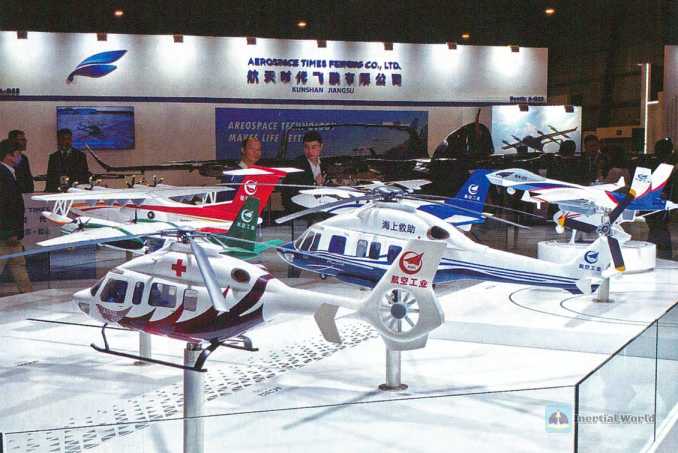
Tianying Equipment took "Working together to create aviation safety" as the exhibition theme, and brought a series of independently developed parachute products covering multiple fields such as human use, complete aircraft, drones, and material airdrops. Wofei Changkong also signed the "Memorandum of Strategic Cooperation on Low-altitude Economic Avionics Kits" with Pinji Avionics, a world-leading civil avionics system solution provider, at the air show. The two parties intend to leverage their respective advantages to carry out joint design of avionics kits on the Wofei Changkong AE200 electric vertical take-off and landing aircraft project. , system integration, airworthiness certification and other fields. The AE200 electric vertical take-off and landing aircraft has a wing length of 14.5 meters, a height of 4.6 meters, and a length of 9 meters. The standard cockpit can carry 1 pilot and 4 passengers, with a maximum range of 300 kilometers.
Domestic large aircraft made a concentrated appearance
This Singapore Air Show is the largest collective appearance of domestic commercial aircraft at an international exhibition so far. Through various methods such as model exhibitions in the hall, outdoor static displays and flight performances, the staged results of the development of China’s commercial aircraft are presented to the public. In the exhibition hall, the China Commercial Aircraft Corporation booth displayed a 1:20 scale model with the latest paint. For example, there are C919, ARJ21 and C929 basic aircraft models, as well as 1:32 scale ARJ21 business jets, medical aircraft, emergency rescue command aircraft, fire extinguishers, cargo aircraft, C919 shortened/high-altitude and extended aircraft models.
In the outdoor static exhibition area, China Eastern Airlines’ C919 passenger aircraft, Indonesia Lingya Airlines’ ARJ21 passenger aircraft and Zhongyuan Longhao Airlines’ ARJ21 cargo aircraft gathered to receive boarding visits from companies and the public from famous places around the world. During the air show, C919 and ARJ21 aircraft also performed flight demonstrations. There are "buyers" who are currently performing commercial flights with domestic and foreign airlines. There are "shows" and "seller shows" that are still conducting emerging market verification test flights at COMAC. There are both passenger aircraft and cargo aircraft, dynamic flight demonstrations and static visits. It can be said that the domestic commercial aircraft delegation at this air show is full of confidence, sincerity and unlimited potential.
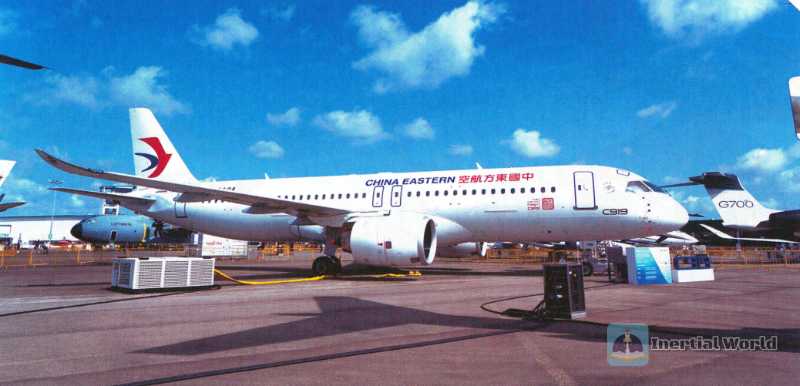
The C919 large passenger aircraft can carry 158-192 passengers and has a range of 4075~5555 kilometers. It adopts advanced aerodynamic design, propulsion system and materials, with lower carbon emissions and higher fuel efficiency. AR The J21 regional jet can carry 78-97 passengers and has a range of 2,225 to 3,700 kilometers. It has good take-off and landing performance at high-temperature and plateau airports and crosswind resistance. Since it was put into commercial operation in June 2016, a total of 127 aircraft have been delivered, safely transporting more than 11 million passengers.
During the flight performance, the C919 completed multiple subjects in the air, including low-speed pass-through flight, low-altitude small-angle turn, climb, and circling, with a focus on advanced avionics systems and automated flight capabilities. At the same time, it also demonstrated excellent safety performance, including flight control processing capabilities and system redundancy in emergency situations.
From the flight performance, the C919 is in excellent condition, with a very stable flight attitude, and has demonstrated good controllability and stability in turning, circling, rapid ascent and descent. Especially in low-altitude flight, the C919’s excellent low-altitude flight and precise control advantages are fully demonstrated. In addition, the engine used is Safran Group’s LEAP-1C, which has relatively mature performance. Its noise control, economy and fuel efficiency are at a high international level.
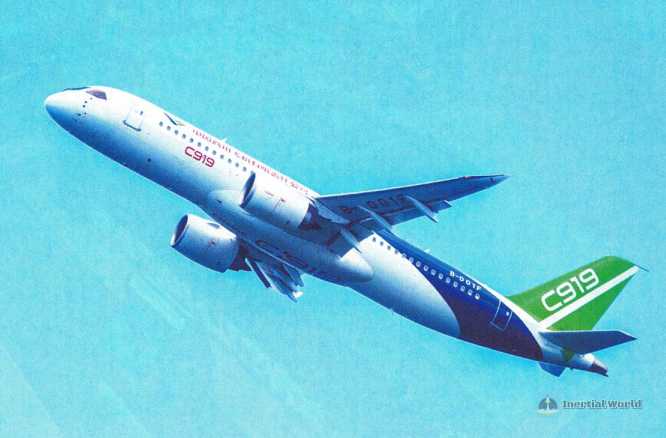
The C919’s flight show at the Singapore Air Show this time is to provide the international market with an opportunity to get to know China’s domestically produced large aircraft at close range. The actual effect is just as analyzed by foreign professional organizations. More than 1,000 companies, 50,000 merchants and spectators from more than 50 countries and regions participated in the air show. "Many people want to see the actual aircraft, its performance and flight status." Prior to this, C919 has delivered satisfactory results in its domestic operations in China. Since the successful completion of its first commercial flight in May last year, 4 passenger aircraft have been delivered so far, safely transporting more than 110,000 passengers. At present, C919 has received more than 1,000 orders, and there are also intention orders from overseas.
In addition, on the opening day of the air show, the sales of C919 had a "good start". Tibet Airlines and Commercial Aircraft Corporation of China held a signing ceremony and jointly announced that Tibet Airlines became the global launch customer of the domestic C919 and ARJ-21 high-altitude aircraft. Tibet Airlines signed a total of 50 orders for domestic large aircraft high-altitude aircraft, including 40 C919 high-altitude aircraft and 10 ARJ-21 high-altitude aircraft. This is not only the first global order for domestic large aircraft high-altitude aircraft, but also means that China’s civil large aircraft manufacturing technology has officially launched an impact on the normal operation of high-altitude environments.
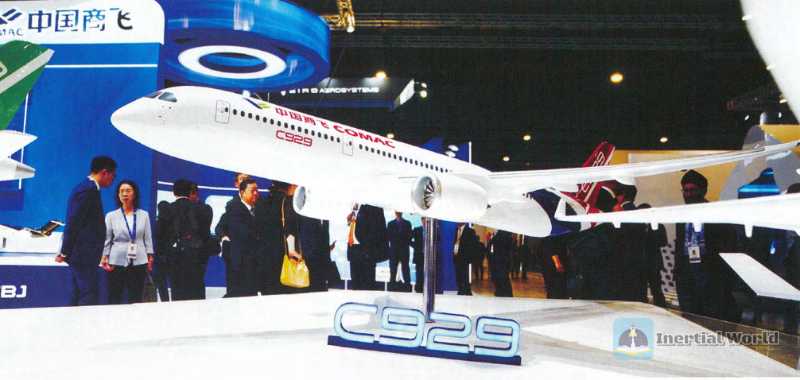
C919 high-altitude aircraft is one of the important models of the C919 aircraft series development. Based on the basic model of C919, it meets the transportation requirements of high-altitude areas by shortening the fuselage and implementing high-altitude modifications. The number of seats is 140-160, and the take-off and landing performance meets all high-altitude airports in China. The maximum take-off and landing altitude of the ARJ21 high-altitude model is 14,500 feet. It has good take-off and landing performance at high-altitude airports and crosswind resistance, and can cover most high-altitude airports in China.
In general, the C919 actively participated in the Singapore Air Show and welcomed the inspection from all over the world. It is not only a self-confidence in its own strength and technical performance, but also a reflection of its desire to actively participate in international market competition. Foreign professional organizations call the C919 "the most watched aircraft", "one of the most anticipated highlights" and "a milestone in a sense" at the air show. CNN in the United States called it a prominent symbol of the "Made in China" strategy, while Indian media believed that the international aviation industry has been in a low ebb in the past few years. The display of C919 came at the right time, which not only shows the recovery of the aviation industry, but also shows China’s influence on the international aviation market.

Foreign exhibitions
As the host, Singapore not only displayed various types of air force equipment, but its local defense enterprises also brought a number of heavyweight exhibits. Singapore Technologies Engineering (ST Engineering) exhibited its latest "Terex S5" wheeled armored vehicle platform, which is the latest generation of "Terex" armored vehicles launched by ST Engineering. "S5" represents the five key features of the new platform - intelligence, superiority, sustainability, survivability and serviceability. It has a new parallel hybrid electric drive system (HED).
The "Terex S5" wheeled armored vehicle has a combat weight of 35 tons and can carry an additional load of 13 tons. The vehicle can meet the highest STANAG 4a/4b mine protection standards. The vehicle is equipped with a "Viper RWS30" unmanned turret system, a 30mm cannon and a 7.62mm coaxial machine gun, with a pitch angle of -20 to +60 degrees, can carry 250 rounds of 30mm ammunition, and can be equipped with anti-tank missiles and anti-UAV facilities.
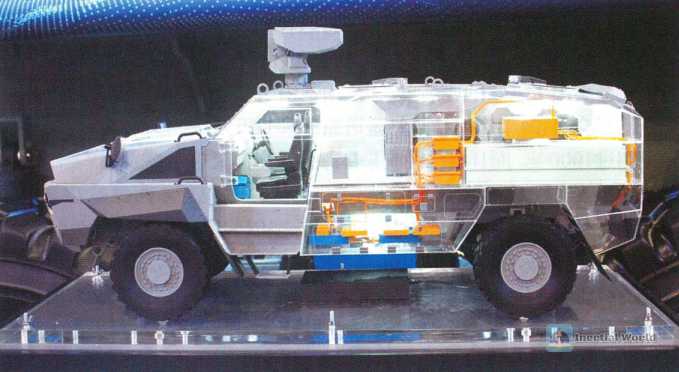
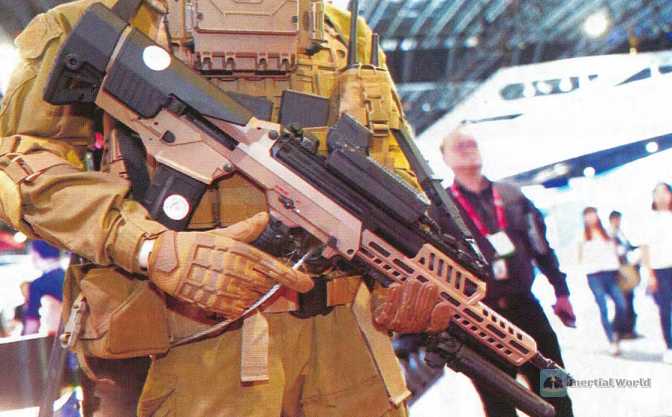

In addition to the new armored vehicle, the company also displayed a multi-rotor drone equipped with The Taurus is a man-machine unmanned ground vehicle. According to the on-site staff, the unmanned vehicle weighs about 1,500 kilograms and can travel about 40 kilometers when running in full electric mode. It can perform remote monitoring, evacuation of the wounded, material handling and logistics transportation through remote control. In addition to carrying a DrN-15 multi-rotor drone and supporting its take-off and landing, the Taurus unmanned vehicle can also be equipped with a robotic arm to facilitate material handling.
Singapore also displayed the latest improved version of its famous SAR21 assault rifle. The new generation of SAR rifles has a variety of configurations, including standard settings and Special options, such as a precision marksman rifle configuration equipped with a fire control system for tracking moving targets, and a grenade launcher configuration integrated with the STK40GI side-mounted launcher, can be changed by simply replacing the barrel and some parts to meet the needs of different scenarios. The new generation of SAR assault rifles still uses a bullpup structure, weighs about 4 kilograms, and the barrel length and rifling pitch remain similar to the specifications of the SAR21. However, the new gun has improved the adjustable buttstock design to make it more ergonomic, and also has a safety and speed selector that can be operated by both hands to facilitate left-handed shooters.
As the main provider of equipment for the Singapore Air Force, major US aviation manufacturers have always been the most important exhibitors at the Singapore Air Show. However, Boeing was a little low-key this time. It did not send a real passenger plane to participate in the static exhibition and aerial demonstration. Instead, it focused on the technical display, allowing the audience to visit the 777X cabin using sustainable materials, experience the F-15EX simulator, and disclose some multi-purpose fighter designs and cockpit technologies.
The US Air Force not only dispatched two B-52H strategic bombers to perform flight demonstrations at the Singapore Air Show, but also sent two F-35A stealth fighters for static display. Judging from the tactical numbers on the fuselages of these two F-35A aircraft, they are from Hill Air Force Base in Utah and are currently deployed at Kadena Air Force Base in Okinawa. In addition, the United States also had an AH-64D armed helicopter, a P-8A anti-submarine patrol aircraft, a KC-135 tanker and a C-17A strategic transport aircraft on static display, and the C-17A had an unassembled "Reaper" drone in its belly. Unlike previous years, no Russian companies displayed their products at the Singapore Air Show this time. Only the Royal Malaysian Air Force sent a Sukhoi Su-30MKM to participate in the static display. Because Singapore has imposed sanctions on Russia, Russian companies are not allowed to participate in the air show. Another reason is that the Russian-Ukrainian conflict has weakened its supply capacity, the battlefield consumption is too large, and the production capacity cannot even guarantee 100% supply to the front line, let alone guarantee the delivery of export orders. Moreover, Russian-made weapons do not perform well on the battlefield, at least not as well as previously advertised. These factors have led to the market’s low view of Russian-made weapons and equipment.
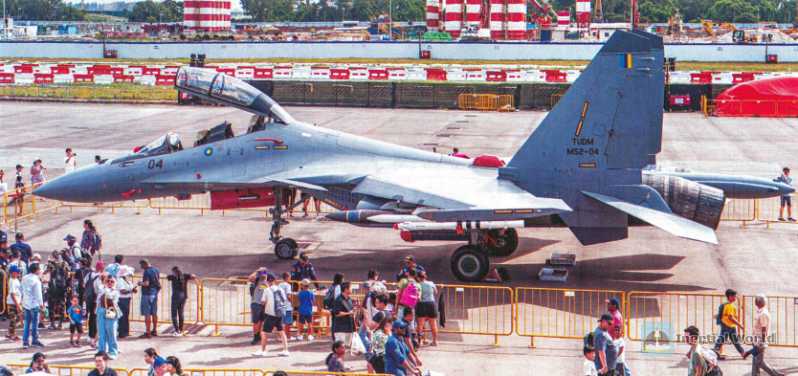
Industry insiders said that some Southeast Asian countries, including Malaysia, Indonesia, Vietnam, Cambodia and Laos, which use old Russian-made or Soviet-made equipment, are interested in finding alternative weapons made in other countries. At the same time, the intensive attacks of anti-ship ballistic missiles in the Red Sea have aroused people’s interest in systems that can defend against these threats, and also aroused people’s interest in smaller and cheaper missiles and drones.
Although Russia was absent, Israeli defense and military enterprises that had previously missed the Dubai Air Show due to the Israeli-Palestinian conflict all came and brought a lot of exhibits, such as the latest "Hermes" 650Spark tactical drone of Israel’s Elbit Systems. Unlike previous family members, the new drone is more like a light aircraft. It has a straight wing without wingtips, right-angle stabilizers and tail fins, a front engine driving a three-blade propeller, and a fixed three-wheel landing gear.
The Hermes 650 UAV has a maximum take-off weight of 650 kg and can operate on short runways. It is equipped with automatic start, take-off and landing functions. It can fly for up to 24 hours with a full fuel load, with an operating ceiling of 6,700 meters and a speed range of 100 to 180 kilometers per hour. The UAV can carry a payload of 260 kg. There are two multi-functional compartments on the belly of the aircraft, which can be used to load mission equipment or supplies. There are also three mounting points under each wing, which can be used to mount optoelectronic equipment, radar or electronic warfare systems, and can also carry missiles and other weapons.
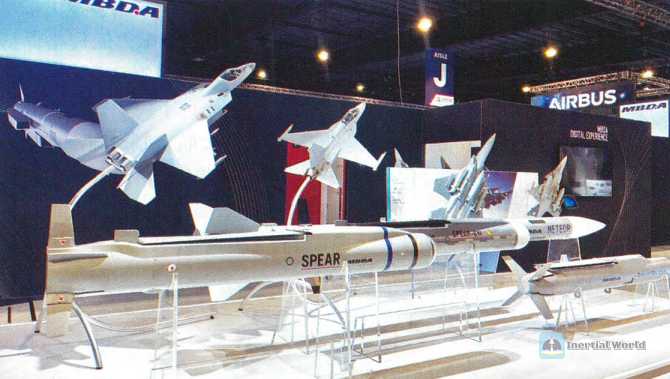
In addition to this UAV, Israeli exhibitors also brought a profile model of the M454 super-high explosive (S-HE) projectile and an upgraded "Iron Fist" active protection system. The former is a unique artillery shell with a GGE warhead dropped by parachute, which can be detonated at the optimal height above the target. It is said that the M454 is five times more effective against infantry and light armored vehicles than the standard 155mm ammunition. The latter is an upgraded model of the "Iron Fist" active protection system, which can effectively counter suicide drones that attack armored vehicles. However, judging from the loss of Israeli tanks in the Israeli-Palestinian conflict, this propaganda is somewhat watered down.
It is worth noting that this Singapore Air Show welcomed a special guest-the Japanese Ministry of Defense. This is the first time that the Japanese Ministry of Defense and its subordinate Acquisition, Technology and Logistics Agency (ATLA) have participated in the Singapore Air Show. They also invited 13 Japanese companies, including Kawasaki Heavy Industries, to appear at their booth.
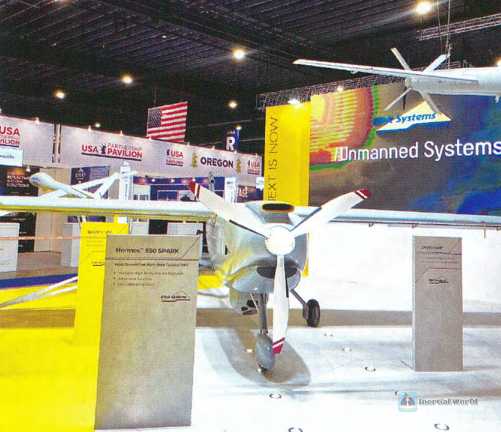
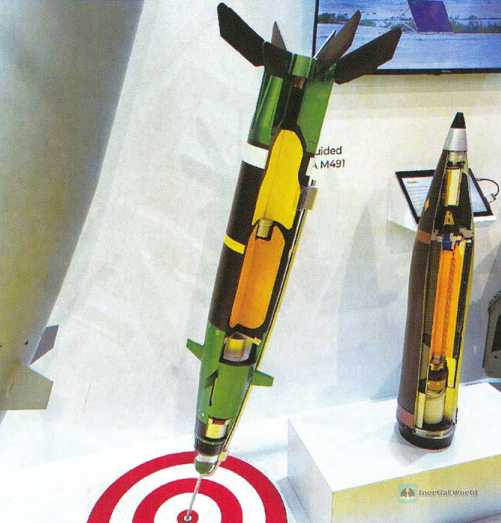

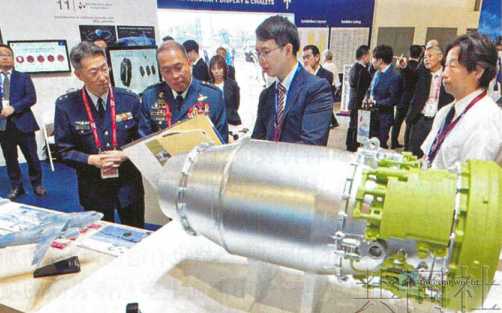
Kawasaki Heavy Industries exhibited models of the P-1 maritime patrol aircraft and C-2 transport aircraft used by the Japanese Self-Defense Forces, as well as a range of aircraft engines including the latest KJ300 small turbofan engine. The company said that with growing international demand, this engine can be used to power military drones. In addition, NEC introduced its warning radar system, and Japan Satellite Communications Corporation also promoted its satellite communication services on site. ATLA officials told the Japan Times that "as Japan amends its defense export rules, the company sees greater export opportunities, especially in the Indo-Pacific region."
The attendance of the Japanese Ministry of Defense and Japanese companies at the international weapons and equipment exhibition is a new trend after the Japanese government revised the "Three Principles on Transfer of Defense Equipment" last year. According to the new three principles, Japan is allowed to export defensive weapons and equipment to countries with close security relations, and the scope has been expanded from the past limited to "rescue, transportation, vigilance, surveillance" and other purposes.
Although subject to the constraints of the peace constitution, Japan exports lethal offensive weapons and equipment to foreign countries. The weapons and equipment with strong strike force are still limited. However, judging from the performance of Japanese companies at the air show, they will actively promote dual-use defense equipment, especially highlighting Japan’s technological advantages, focusing on radar, patrol boats and logistics equipment, and focusing on Southeast Asian countries. On the one hand, they value the potential of the Southeast Asian market, and on the other hand, they also want to help some South China Sea sovereignty claimants improve their naval and air equipment capabilities and encourage them to confront China at sea. In addition, if Japan follows South Korea’s example and opens up sales in the international military industry market, it will greatly reduce the cost of mass production of domestic weapons and equipment, and will also help improve the equipment level of the Self-Defense Forces, thereby enhancing the overall military strength.


